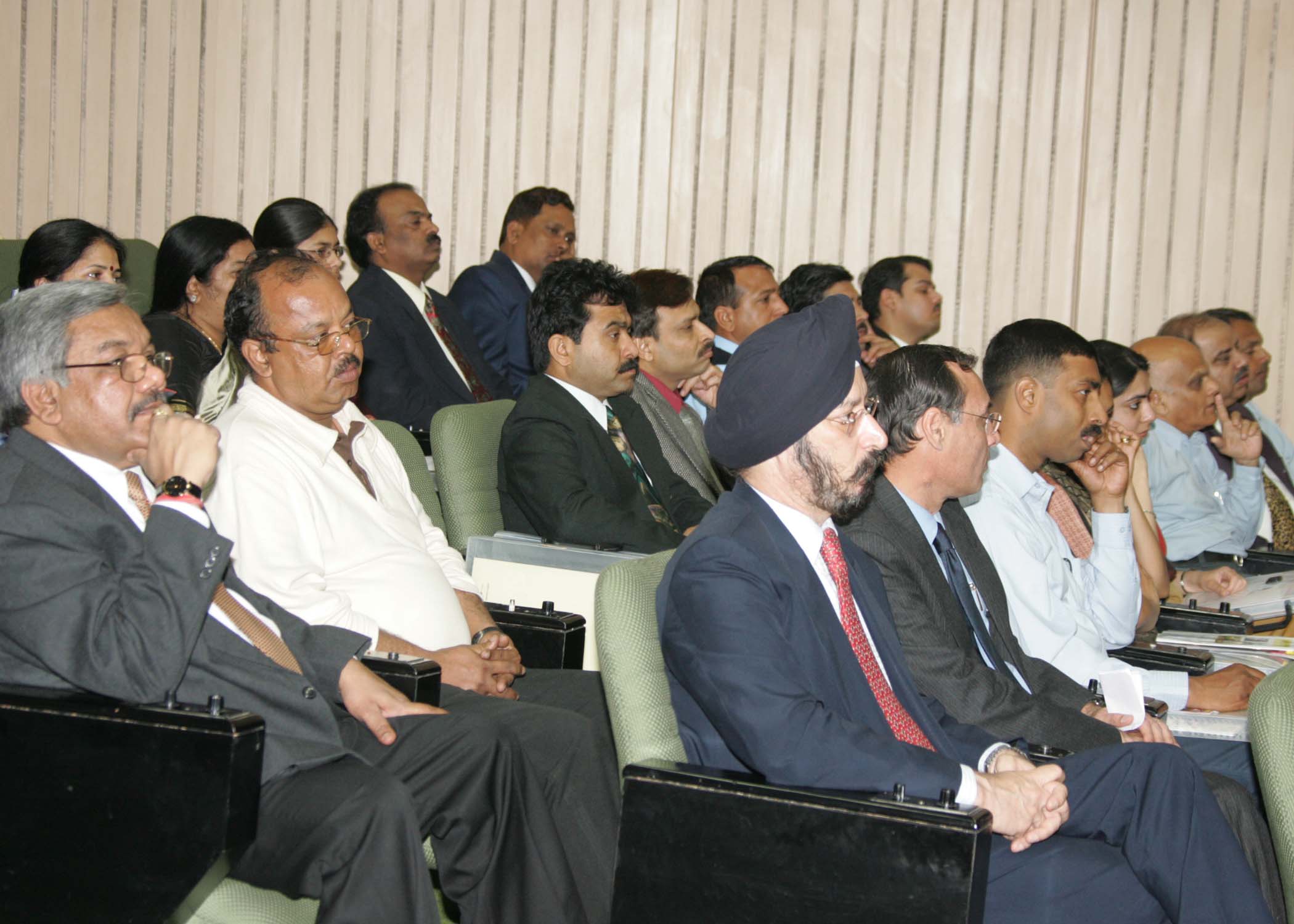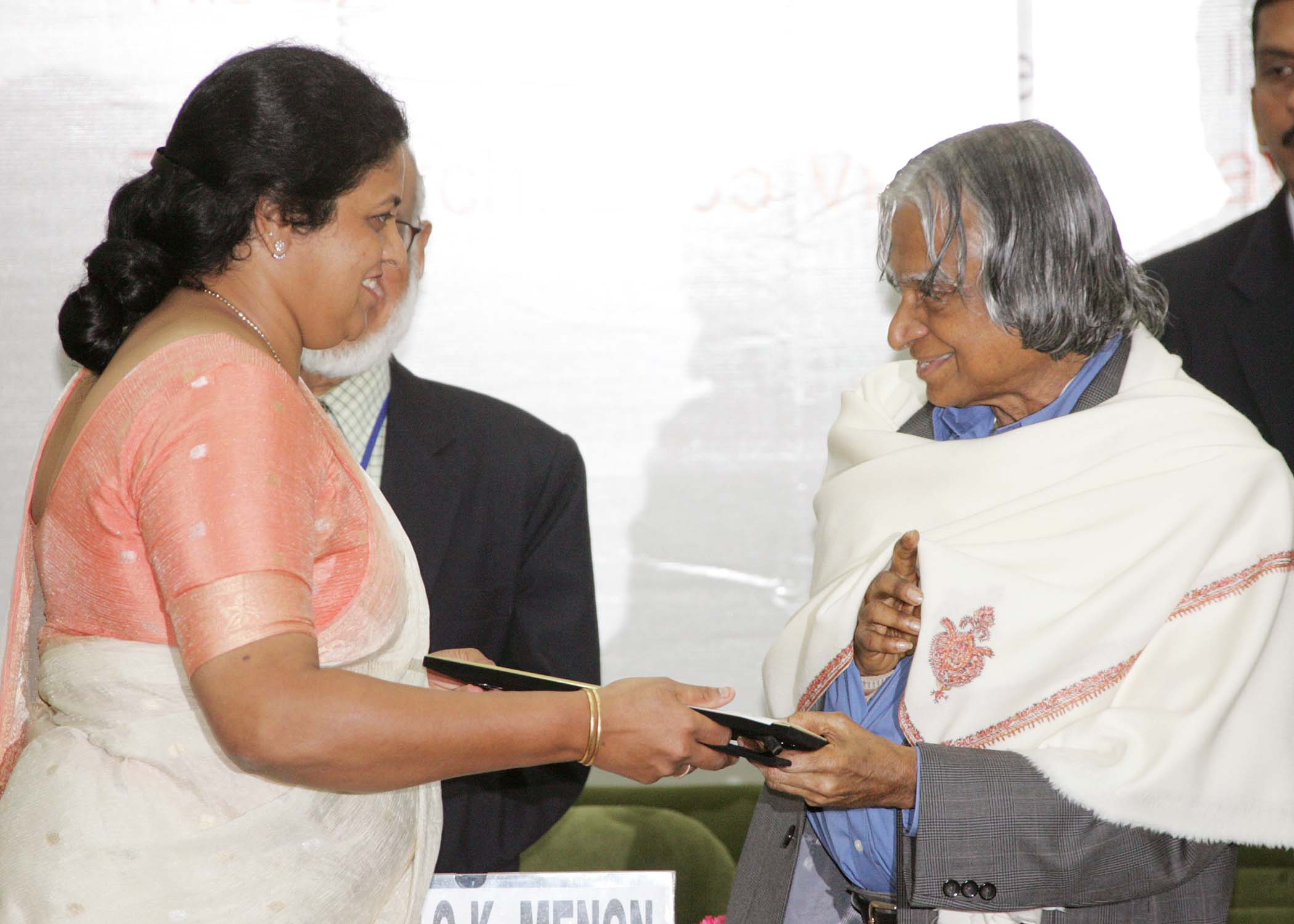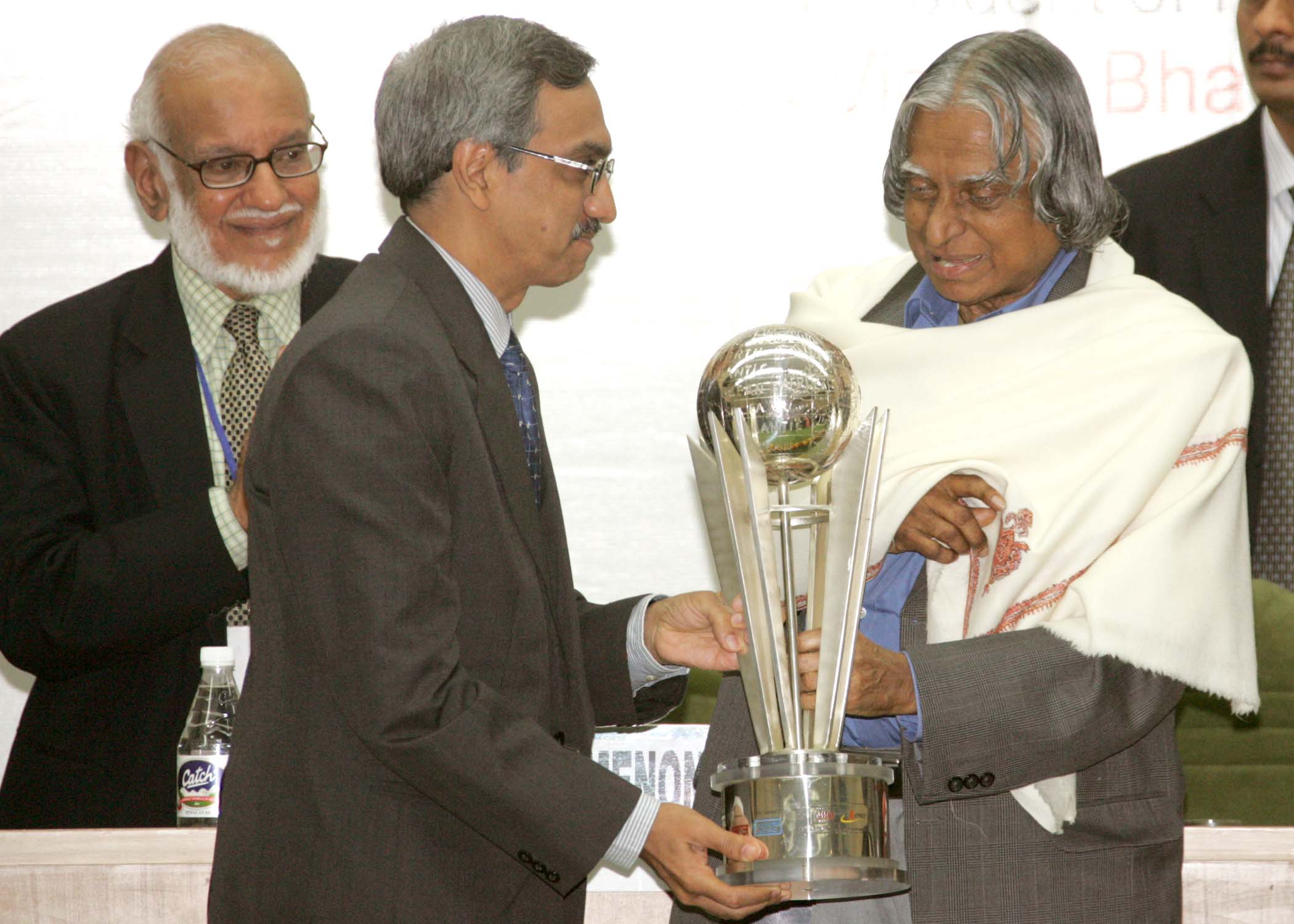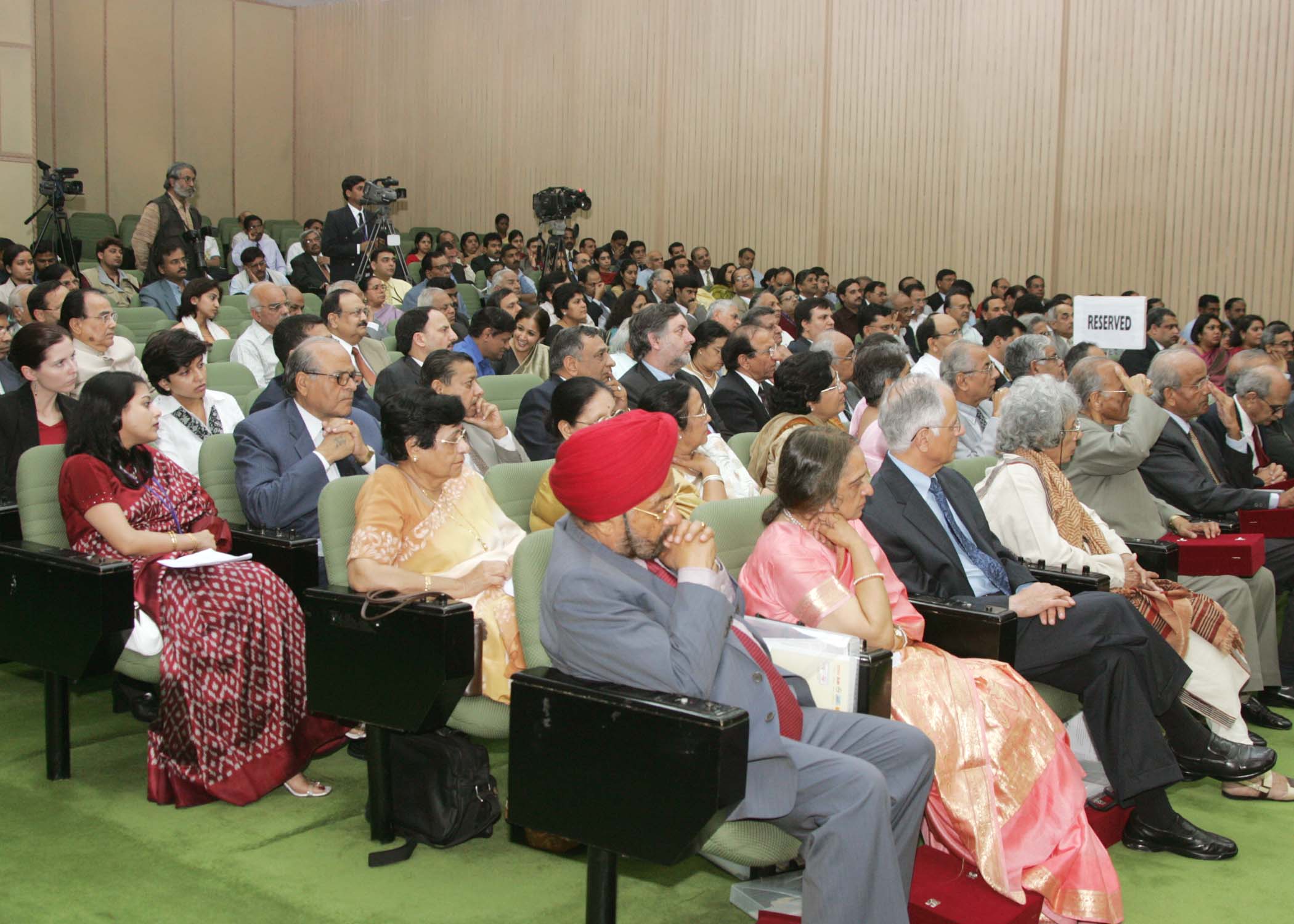|
|
ADDRESS AT THE PRESENTATION OF THE INDIAN INNOVATION AWARDS 2005
07-03-2005 : Vigyan Bhavan, New Delhi.
Development challenges in reaching difficult regions of the Nation
I am delighted to participate in the Indian Innovation Awards 2005 organized by the Entrepreneurial Management Processes International (EMPI) in collaboration with NDTV and Business World. I greet the organizers who are celebrating Indian Innovative Organisations towards promotion of a culture of innovation among our entrepreneurs. I congratulate the award winners, Infrastructural Leasing and Financial Services, Narayana Hirudayalaya, BAIF Development Research Foundation, Mother Dairy Food Processing Ltd., All India Society for Electronics and Computer Technology, National Stock Exchange of India and the Department of School Education, Government of Nagaland. I understand that these seven innovative organisations have been selected through a process of selection from five hundred and ninety six participants. I was thinking, what to discuss with the teams assembled here. I have chosen the topic as "Development challenges in reaching difficult regions of the Nation". To begin with let us discuss the Engine of knowledge society which is innovation.
Engine of Knowledge Society is Innovation
During the last century, the world has undergone a change from agriculture society, where manual labour was the critical factor, to industrial society where the management of technology, capital and labour provided the competitive advantage. Then the information era was born in the last decade, where connectivity and software products are driving the economy of a few nations. In the 21st century, a new society is emerging where knowledge is the primary production resource instead of capital and labour. The Knowledge society is powered by innovative capacity. Efficient utilisation of this existing knowledge can create comprehensive wealth of the nation and also improve the quality of life - in the form of better health, education, infrastructure and other social indicators. Ability to create and maintain the knowledge infrastructure, develop knowledge workers and enhance their productivity through creation, growth and use of new knowledge will be the key factors in deciding the prosperity of this Knowledge Society. Whether a nation has arrived at a stage of knowledge society is judged by the way the country effectively deals with knowledge creation and knowledge deployment in all sectors like IT, Industries, Agriculture, Health Care etc., Innovation is the key element in building the knowledge society. Knowledge society in turn leads to developed societies. I am very happy that with institutions that deal with entrepreneurship, electronic media and print media in business are joining together, taking the innovation as an important task.
Now I would like to discuss the ingredients of Knowledge Society.

Necessary ingredients for Knowledge Society
Knowledge is converted into wealth for social good through the process of innovation. Innovation is an important factor for the competitiveness of both service and manufacturing sectors. Innovation is mainly fed by dynamic organizational change and also in various walks of life borne out of experiences of individuals and groups and at times from R&D labs also. Hence there is an urgent need to establish an efficient innovation system in the country. Such a system would involve creation of clusters, which are networks of
a) Inter-dependent firms,
b) Technology and knowledge producing institutions like universities, colleges and institutes, research institutes, and technology providing firms,
c) Bridging institutions like think tanks, providers of technical or consultancy services, and;
d) Customers links the value-added production chain
The concept of clusters goes beyond that of a firm network, as it captures all forms of knowledge sharing and exchange. Thus, an innovative system with its clusters would tap into the growing stock of global knowledge, assimilate and adopt it to local needs and finally create new knowledge and technology. The innovators who have been awarded can replicate their innovations in different parts of the country. Time is now ripe especially since the Government is focused to provide a new deal for the rural India.


New Deal for Rural India
In my address to the nation on the eve of the Republic Day 2005, I had outlined a vision for rural development. The vision envisages total eradication of poverty, excellent and affordable opportunities for education and skill development for all citizens, health care for all and sanitation coverage and generation of higher income levels for all the people in the country. In addition, agriculture, manufacturing and services sectors will not only cater to domestic needs but also acquire leadership positions in the global economy. In the Finance Minister?s latest budget proposals the programme of Providing Urban Facilities in Rural Areas (PURA) plays a very important role. PURA envisages four connectivities. They are Physical connectivity, electronic connectivity and knowledge connectivity thereby achieving economic connectivity.

Village Knowledge Centres
With the kind of awareness and opportunities available in ICT, it will soon become a reality wherein every one of our villages will have computers and connectivity available. These would be the window to the world of knowledge for our villages and also to reap the benefits of our e-governance, tele-education, tele-medicine, e-commerce and e-judiciary initiatives. In spite of the all pervasive nature of the computers they would still be far away from being a truly friendly access device for our villagers. We would need in such cases, a human intermediary who would act as the village information officer. He will be the extended eyes and ears of the villager to the world of knowledge. India has approximately 2.3 lakh Village Panchayats. I visualize establishment of village knowledge centers in these Panchayats to empower the villagers with the knowledge and to act as a nodal center for knowledge connectivity for the villagers. This Village Knowledge Centers will act as an interface for economic activity among the village clusters. The knowledge center from which the villagers would access the information through the village information officer can also be used for collection, digital storage and dissemination of village specific information pertaining to any relevant information to the villagers. The development of Village Knowledge Centres has become a reality in the budget proposals of 2005.


Role of Innovators
There is always a tendency, even among social institutions and social organisations including religious institutions that they would like to select for education, healthcare and other socially relevant activities, always well developed parts of states (with few exceptions), and preferably urban areas. Particularly, the innovators should always select difficult areas and trigger development to ensure the balanced development of the whole nation.
Here I am reminded of an e mail which I received from one of our citizens. The e-mail reads as follows:
Here is a piece to remind all of us on whatever health, wealth or light we have, and the importance of sharing it with the less privileged or inherited ones. A few weeks ago National Institute for Mentally Handicapped, Hyderabad, had conducted a sports meet for all the physically & mentally handicapped children at National Stadium Hyderabad. In one race.., Nine contestants, all physically or mentally disabled, assembled at the starting line for the 100 mtr race. At the starting signal, they all started out, not exactly in a dash, but with a relish to run the race to the finish and win. All, others except one little boy who stumbled on the asphalt, tumbled over a couple of times, and began to cry. The other eight heard the boy cry. They slowed down and looked back. Then they all turned around and went back......every one of them. One girl with Down's syndrome bent down and kissed him and said, "This will make it better." Then all nine linked arms and walked together to the finish line. Everyone in the stadium stood, and the cheering went on for several minutes. People who were there are still telling the story. Why? Because deep down we know this one thing: What matters in this life is more than winning for ourselves. What matters in this life is helping others win, even if it means slowing down and changing our course. I would say that, you do not have to slow down. Rather by helping difficult areas, the feed back will make you go faster. If you pass this on, we may be able to change our hearts as well as someone else's. "A candle loses nothing by lighting another candle".
This noble act will promote creativity and socially conscious society among our billion people and they will all become partners in national development.

Creativity
Since our population is of a billion people, the society in its own way has to make innovations continuously, not only in urban areas but also in rural areas. For example, the honey bee network movement at Ahmedabad is an excellent attempt towards promotion of creativity. Creativity comes from beautiful minds. It can be anywhere and any part of the country. It may start from a fisherman hamlet or a farmer?s household or a dairy farm or cattle breeding centre or it emanates from class rooms or labs or industries or R&D centres. Creativity has got multi dimensions like inventions, discoveries and innovations. Creativity has got an ability to imagine or invent something new by combining, changing or reapplying existing ideas. Creativity has an attitude to accept change and newness, a willingness to play with ideas and possibilities, a flexibility of outlook, the habit of enjoying the good, while looking for ways to improve it. Creativity has a process to work hard and continually to improve ideas and solutions by making gradual alterations and refinements to their works. The important aspect of creativity is: seeing the same thing as everybody else, but thinking of something different. Now I would like to share my experiences with National Innovation Foundation.


Partnership
I have seen in Ahmedabad the working of the National Innovation Foundation? which is able to attract a number of innovations coming from the rural sector. However, what they need is design input to make it into a competitive marketable product. I would recommend a collaborative venture between the Entrepreneurial Management Processes International (EMPI) and National Innovation Foundation to work on converting the promising innovations into a commercially viable venture. This can lead to creation of a number of enterprises in the rural sector leading to large scale employment opportunity and wealth generation in the rural areas. The establishment of enterprises for such ventures can be financially supported by the institutions like IL& FS.
Now I would like to suggest a method by which EMPI and other partners can make productive use of the valuable data generated through the conduct of Indian Innovation Award Scheme.

Role of Entrepreneurial Management Processes International (EMPI) and similar institutions
The Entrepreneurial Management Processes International has received five hundred and ninety six applications on different areas relevant to the development of our society such as: public policy, physical infrastructure, social infrastructure, rural development, high technology and manufacturing industries, new convergent media, service industries ? banking, insurance, hospitals, agriculture, food, water management and environment. EMPI can create a forum in which the proposals submitted for the award can be discussed facilitating its dissemination to intended users and also create market connectivity for wider applications. The faculty members of EMPI could select the top three innovations in each of the area and prepare them as case studies for the students of EMPI. The television partner NDTV and print partner Business World can make these innovations as episodes and disseminate to different institutions through their channel. This will be an effective method of promoting these innovations towards societal applications. Can you take up this challenge?


Conclusion: Development of Invisible Leaders
For the nation today what is needed is a combination of technology, innovation, leadership and inspired workforce. Let us analyze the dynamics of good organizations for national development. Developed India as defined can be only powered by economic strength.
- The economic strength is powered by competitiveness
- The competitiveness is powered by knowledge power.
- The knowledge power is powered by Technology and innovation.
- The Technology is powered by resource investment.
- The Resource investment is powered by revenue and return on Investment.
- The Revenue is powered by Volume and repeat sales through customer loyalty.
- The customer loyalty is powered by Quality and value of products.
- Quality and value of products is powered by Employee Productivity and innovation.
- The Employee Productivity is powered by Employee Loyalty, employee satisfaction and working environment.
- The Working Environment is powered by management stewardship.
- Management stewardship is powered by Invisible leadership
The Invisible leadership means exercising the vision to change the traditional role from the commander to the coach, manager to mentor, from director to delegator and from one who demands respect to one who facilitates self respect. I am sure all the institutions and the future aspiring institutions are spearheaded by invisible leadership. For a prosperous and developed India, the important thrust will be on the growth in the of number Invisible Leaders and innovative organisations. Once again let me congratulate all the award winners and wish you all success in promoting innovative organisations.
May God bless you.
<<Back
|
|